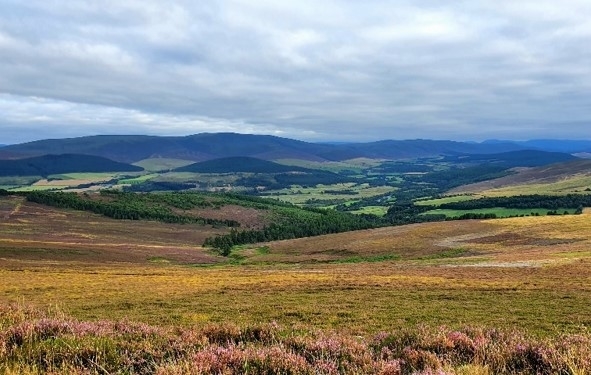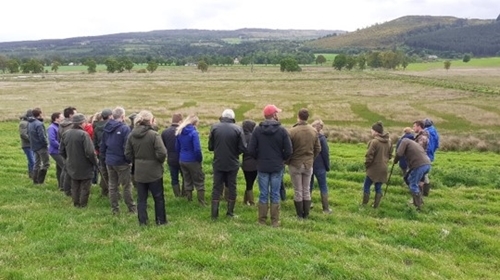
By Ross MacLeod, GWCT Head of Policy, Scotland
The pressing need to respond to global climate change and biodiversity loss is undoubtedly driving a large part of our Scottish policy work this year, with government consultations, draft legislation, parliamentary evidence sessions and more coming our way. The Wildlife Management and Muirburn Bill is set to continue its passage through Holyrood, Scotland’s Biodiversity Strategy is currently under review and the Agriculture & Rural Communities Bill has just been laid before Scottish Parliament.
It has been difficult to step away from all the activity and gauge what this means for GWCT, our members and clients. One recurring theme that strikes me from my comments in recent responses to Scottish Government consultations is that in the urgency to address the climate change crisis and set appropriate policy, it is vital that we don’t inadvertently solve one set of problems only to create other more intractable difficulties, particularly where there is a lack of evidence.
Policy should ideally help us avoid the mistakes of the past, for instance in relation to inappropriate siting of forestry planting, or drainage to improve livestock productivity. In both cases, huge amounts of taxpayers’ money have been spent to achieve broad objectives, and huge amounts more have been devoted to unwinding the ensuing problems. This points to the need for a flexible – or adaptive management – approach that builds on and responds to evidence that we gather so that we ‘learn by doing’.
Moorland management with local flexibility
The proposed muirburn legislation is a case in point. General restriction of burning may risk unintended consequences when more localised management is necessary. There are acknowledged gaps in our understanding about the impacts on different depths of peat. Other uncertainties exist regarding the effects of muirburn over different timescales and geographic extents.
The lack of any moorland management at all risks uncontrolled wildfires. Some moorland areas may be described as blanket bogs but that doesn’t mean that wildfire danger is negligible. Water table levels will vary, particularly during extended dry periods. We have seen the consequences of build-up in fuel load and dry conditions only too well in recent years, with fires at Saddleworth, Marsden Moor, Holme Moss, and in Scotland, Moray and Forsinard in 2019 and recently at Cannich. The 2023 Cannich fire burned 30 square miles of ground, making it potentially the largest wildfire in UK history.
The current rush to tree-planting in the uplands also needs careful consideration as it can exacerbate carbon emissions. Research undertaken by the University of Stirling and the James Hutton Institute identifies that planting of trees onto heather moorland did not always lead to an increase in net ecosystem carbon stocks, even decades after planting, with the authors concluding that “…if we are to successfully manage our landscapes for carbon sequestration, planting trees is not always the best strategy.”
In short, let’s ensure that land managers have room for manoeuvre in setting plans and activity that fit with site-specific characteristics.
Future farming perspectives
Alongside upland policy matters, a considerable part of my time has been dedicated to agricultural issues in 2023, not least the challenge to encourage balance between productive farming and sound biodiversity stewardship. The two key building blocks around carbon audits and biodiversity assessments rolling out under Scottish Government strategy make sense in this respect, encouraging farmers to reduce greenhouse gas emissions, look at ways to sequester carbon and ensure good farmland habitat condition.
However, the future is much less certain in relation to future support payments to Scottish farmers in return for progress on emissions reductions and biodiversity outcomes. What seems abundantly clear is that the level of public funding support enjoyed right now is highly likely to reduce over the next few years.
On the flip side, there is much discussion about whether private sector payments could potentially make up for public funding shortfalls. If that is the case, Scottish Government needs to provide leadership by introducing a clear framework and guidance for measurement of net biodiversity gain across ‘natural capital’ markets. Farmers need confidence and trust in alternative funding options if these are to make up for any shortfalls in farm income.
Delivering change at landscape-scale?
Whilst the concept of farmer clusters invented by the GWCT is now popping up in different places around Scotland, it’s still disappointing that there is no simple mechanism like facilitation support to encourage greater collaboration.
The Agriculture Route Map proposed by Scottish Government still seems to focus on elective (i.e. competitive) funding support for this. I’ve pointed out in written evidence to Scottish Government that only around 15% of eligible farming units are involved in our current Agri-Environment Climate Scheme.
If we are to achieve the level of change necessary to respond to biodiversity and climate emergency risks, our collective ambition must be that as many land managers as possible are engaged in collaborative landscape-scale working, not a minority. Scottish Government should be offering wide facilitation support to kick-start and maintain farmer clusters to maximise participation.

West Loch Ness Farmer Cluster – collaboration in action
Where next?
So, what’s my overall take on current Scottish policy developments? Over 70% of the UK’s land mass is managed by Farmers. Game management is woven into this landscape through the preservation of heather moorland, by the planting of woodland, hedges, and cover crops – and of course, through professional, necessary predation control.
Delivered at scale, this sustained commitment is essential if we are to prevail in the fight against climate change and biodiversity loss. That it will need to evolve over time to meet new challenges is unquestioned. For it to happen however, Scottish and UK Governments need to keep building engagement with farmers and gamekeepers as part of the solution. I’ll take stock again next year and see how things have progressed!